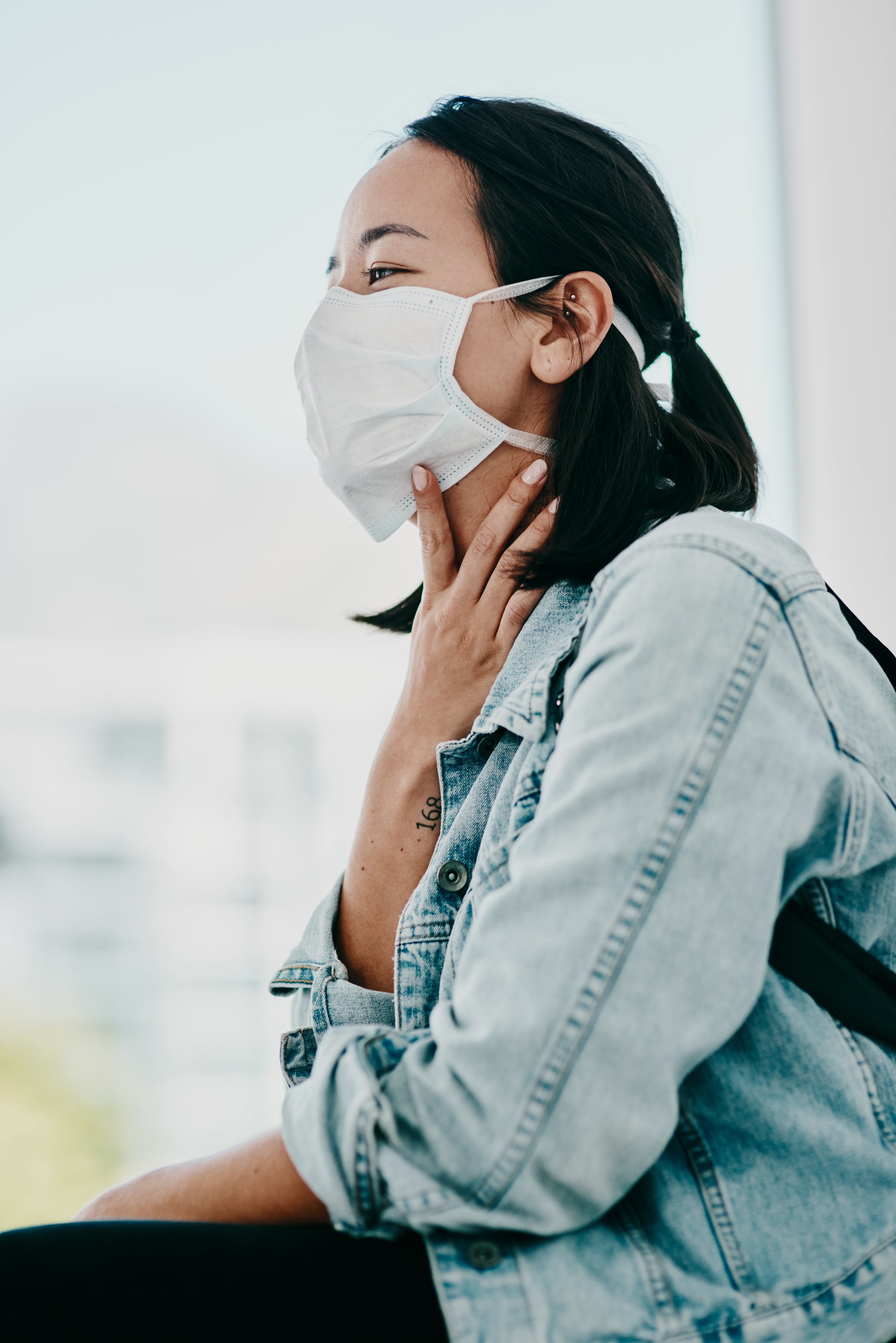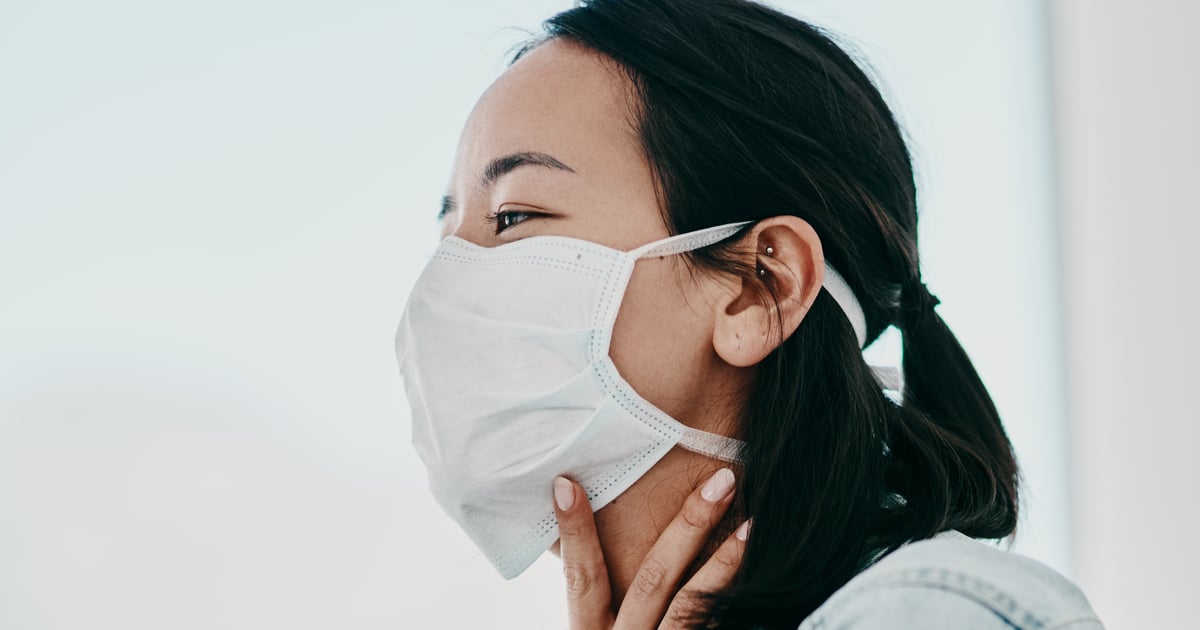
There’s been a lot of uncertainty around COVID-19 testing in the US. Recently, the Centers For Disease Control (CDC) seemed to soften its testing guidelines — explaining that people who had been exposed but hadn’t developed symptoms no longer needed to be tested — only to reverse course when it was reported that the changes had come under pressure from the White House. If you’re feeling a bit overwhelmed by all the back and forth, you’re not alone — but experts want Americans to know testing is essential, especially with cases expected to climb this fall.
“The most effective approach to fighting the pandemic is widespread testing,” Natasha Bhuyan, MD, a family physician and regional medical director at One Medical, told POPSUGAR. “It allows us to isolate cases and to contact trace in order to quickly identify other cases.” However, politics aside, the line public health experts are trying to toe is a challenging one. “When faced with limited resources, we have to consider testing prioritization,” Dr. Bhuyan explained.
In other words, when the demand for testing begins to place a strain on the healthcare system — as it has at different times throughout the pandemic — difficult decisions have to be made in order to ensure that the most critical cases have access to testing and that results can be turned around quickly enough to curb the spread. So, who should be tested? We asked experts to break it down.
Who Is a Priority For COVID-19 Testing?
“The highest-priority groups to test are those who are hospitalized,” Dr. Bhuyan said. That’s been true since the pandemic began, but with testing more available now, the pool has widened. That said, “testing capacity is quite regional,” she said. “So it’s important to understand what is happening with labs in your area.” If you believe you need testing, you should call your primary-care provider, who can assess whether you’re a good candidate, but generally speaking, anyone who falls into these categories is likely to be considered, Dr. Bhuyan explained:
- People experiencing COVID-19 symptoms.
- Members of or caretakers for a vulnerable population, such as the elderly or immunocompromised.
- Essential workers.
- People who have reason to believe they could have an active infection, because they were exposed to an infected person or traveled to a high-risk area, for example.
That last category is significant. “We know people can be infectious after exposure before they become symptomatic. That is a proven fact,” David Cutler, MD, a family medicine physician at Providence Saint John’s Health Center in Santa Monica, CA, told POPSUGAR. “Now, if they stay isolated for 14 days after exposure, and infect no one, there is a good chance the infection will pass with no harm done. But if they do infect other people after exposure, and those people go on to infect others, that is how pandemics perpetuate.”
That’s why the change in the CDC’s guidelines was so controversial. “Because of the risk of asymptomatic and presymptomatic spread of SARS-CoV-2, we recommend testing for all close contacts of persons with COVID-19,” Daniel Devine, MD, a dual-board certified internist and geriatrician and cofounder of Devine Concierge Medicine, told POPSUGAR. Dr. Cutler explained that you’re considered to have had an exposure if you were less than six feet away from someone who has tested positive for COVID-19 for more than 15 minutes.
When resources aren’t limited, even those who may have been exposed while traveling can be considered for testing, regardless of whether they’ve developed symptoms. However, “the best option right now is to avoid travel to an area where COVID-19 is prevalent,” Dr. Bhuyan said. “Of course, getting tested four to seven days after your return is still an option. The issue is that labs are increasingly facing capacity issues. By testing people who travel, we might be limiting resources for those who have symptoms or a known exposure.”
Given the number of cases the US has had and the possibility that the numbers will only increase during the colder months, “it’s truly best to stay at home when you can and especially to avoid travel to places with high rates of COVID-19 cases,” Dr. Bhuyan told POPSUGAR.
Remember too that testing isn’t the only (or even the most effective) way to protect your community when you do need to travel. “Many states recommend self-quarantine for 14 days after visiting a high-risk state and returning home,” Dr. Devine said. He explained that a person can become sick with COVID-19 at any point during that window, and it’s possible to get a false negative if you’re tested too soon. “Thus, the safest route is to follow social-distancing guidelines while traveling and completing a full 14-day quarantine upon return,” Dr. Devine said.
In fact, regardless of the circumstances that led to your testing, “you should be in quarantine until the results are known,” Dr. Cutler said.
The Bottom Line
Testing guidelines continue to evolve, and that’s likely to be the case until the US has sufficiently flattened the curve. The best thing you can do is seek medical advice. “At this point in time, I recommend contacting your doctor if you are exposed to an individual with known or likely COVID-19, regardless of the presence of symptoms, to discuss getting tested,” Dr. Devine said.
This is especially true if you or a loved one are considered high risk. “Older adults and those with certain acute or chronic diseases are at increased risk for severe COVID-19 and should certainly be tested after exposure, even if they are asymptomatic,” he explained, adding that your doctor can also talk you through the steps you’ll need to take to properly self-isolate at home.
Dr. Cutler agreed. “My personal advice is that if you have COVID-19 symptoms, get tested. If you have had a significant exposure, then get tested,” he said, noting that a call with your primary-care physician is a good first step. “And if you are in some special, vulnerable population or are required to test for work, travel, school, or another administrative reason, then get tested.”
If you have the misfortune of being turned away because testing supplies in your area are low, “it is important to remember that most mild cases of COVID-19 will self-resolve without intervention from the medical community,” Dr. Devine said. Your doctor can explain how to best manage your symptoms at home and when to seek care.
POPSUGAR aims to give you the most accurate and up-to-date information about the coronavirus, but details and recommendations about this pandemic may have changed since publication. For the latest information on COVID-19, please check out resources from the WHO, CDC, and local public health departments.
